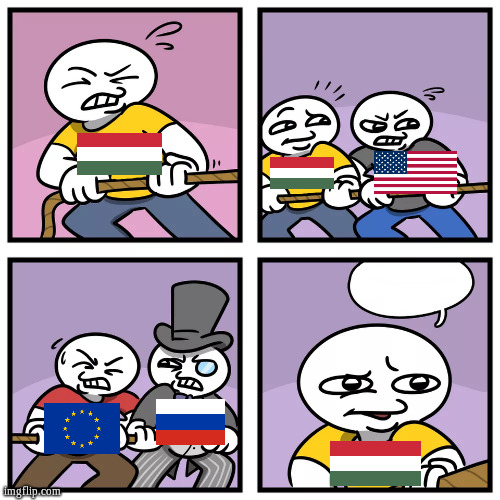I was apprehensive about EVs but the first time I rode in one I immediately fell in love with it. I get carsick easily, and the super-smooth ride without the chug-chug-chug of an internal combustion engine made the experience surprisingly much more pleasant for me. I do not use a car, but if I had to buy one, I don’t think I could ever stomach an ICE again knowing that this alternative is available.
- 1 Post
- 38 Comments

 6·10 months ago
6·10 months agoBy some argument, section 103 of the DMCA (which is what grandparent post is referring to) does make it illegal to even talk about DRM circumvention methods.
illegal to: (2) “manufacture, import, offer to the public, provide, or otherwise traffic in” a device, service or component which is primarily intended to circumvent “a technological measure that effectively controls access to a work,” and which either has limited commercially significant other uses or is marketed for the anti-circumvention purpose.
If youtube implements an “access control measure” by splicing the ads with the video and disabling the fast-forward button during the ad, and you go on a forum and say “Oh yeah, you can write a script that detects the parts that are ads because the button is disabled, and force-fast-forwards through those”, some lawyer would argue that you have offered to the public a method to circumvent an access control measure, and therefore your speech is illegal. If you actually write the greasemonkey script and post it online, that would definitely be illegal.
This is abhorrent to the types among us for whom “code IS free speech”, but this scenario is not just a hypothetical. DMCA has been controversial for a long time. Digg collapsed in part because of the user revolt over the admins deleting any post containing the leaked AACS decryption key, which is just a 32-digit number. Yet “speaking” the number alone, aloud, on an online platform (and nothing else!) was enough for MPAA to send cease and desist letters to Digg under DMCA, and Digg folded.

 2·10 months ago
2·10 months agoSome notes for my use. As I understand it, there are 3 layers of “AI” involved:
The 1st is a “transformer”, a type of neural network invented in 2017, which led to the greatly successful “generative pre-trained transformers” of recent years like GPT-4 and ChatGPT. The one used here is a toy model, with only a single hidden layer (“MLP” = “multilayer perceptron”) of 512 nodes (also referred to as “neurons” or “dimensionality”). The model is trained on the dataset called “Pile”, a collection of 886GB text from all kinds of sources. The dataset is “tokenized” (pre-processed) into 100 billion tokens by converting words or word fragments into numbers for easier calculation. You can see an example of what the text data looks like here. The transformer learns from this data.
In the paper, the researchers do cajole the transformer into generating text to help understand its workings. I am not quite sure yet whether every transformer is automatically a generator, like ChatGPT, or whether it needs something extra done to it. I would have enjoyed to see more sample text that the toy model can generate! It looks surprisingly capable despite only having 512 nodes in the hidden layer. There is probably a way to download the model and execute it locally. Would it have been possible to add the generative model as a javascript toy to supplement the visualizer?
The main transformer they use is “model A”, and they also trained a twin transformer “model B” using same text but a different random initialization number, to see whether they would develop equivalent semantic features (they did).
The 2nd AI is an “autoencoder”, a different type of neural network which is good at converting data fed to it into a “more efficient representation”, like a lossy compressor/zip archiver, or maybe in this case a “decompressor” would be a more apt term. Encoding is also called “changing the dimensionality” of the data. The researchers trained/tuned the 2nd AI to decompose the AI models of the 1st kind into a number of semantic features in a way which both captures a good chunk of the model’s information content and also keeps the features sensible to humans. The target number of features is tunable anywhere from 512 (1-to-1) to 131072 (1-to-256). The number they found most useful in this case was 4096.
The 3rd AI is a “large language model” nicknamed Claude, similar to GPT-4, that they have developed for their own use at the Anthropic company. They’ve told it to annotate and interpret the features found by the 2nd AI. They had one researcher slowly annotate 412 features manually to compare. Claude did as well or better than the human, so they let it finish all the rest on its own. These are the descriptions the visualization shows in OP link.
Pretty cool how they use one AI to disassemble another AI and then use a 3rd AI to describe it in human terms!

 2·11 months ago
2·11 months agoCan’t access the article, but wasn’t China the one most vulnerable from the Malacca Strait being a chokepoint? As in, their trade towards Europe and fuel from the Middle East being potentially threatened? How does Thailand pitching to the US make sense then? How would a Thai bypass even increase security, since both routes are in the same area and can be equally blockaded? There aren’t any problems with throughput capacity at Malacca, unlike say at the Panama Canal. Maybe it will make the travel distance slightly shorter, but is there really any way it could ever be cost-effective to offload and reload ships for a few hundred kilometers savings?

 2·11 months ago
2·11 months agoAm I the only one for whom "open"subtitles.org hasn’t worked in years? I literally cannot find the download button, like in those okboomer memes. Never used the API. Switched to subscene.com and haven’t had problems since.

 2·11 months ago
2·11 months agoYou absolutely do not have the right to post a sign like “No Hispanics” at your restaurant, under current US law (Civil Rights Act of 1964). You do not have to wait for an actual hispanic person to show up and be refused service to be liable - the presence of the sign alone is already in violation and can get you fined or imprisoned. You cannot claim “This sign is just for decoration as an expression of my 1st Amendment rights, we would never actually enforce it.” In this way, the Civil Rights Act already does abridge your right to write any sign you want, ironically in direct contradiction to the “Congress shall make no law” language of the 1st Amendment.

 4·11 months ago
4·11 months ago*Yawn!* Wake me up when they stop requiring phone numbers to sign up.

 7·11 months ago
7·11 months agoAn atheist living in Saudi Arabia absolutely has the right to walk into the public square and shout that god does not exist. They just have to be willing to accept the consequences of execution as a result.
Stating a fact of physical ability does not contribute any additional information in a discussion about legality.

 1·1 year ago
1·1 year agoPiped/invidious work by scrapping the video chunks directly from google and proxying them through volunteer servers. They will stop working as soon as google gets around to locking down the APIs that they are abusing, or blocks their server IPs.

 13·1 year ago
13·1 year agoThis is like that Key and Peele sketch where they rob the bank by working in there for 20 years.

 3·1 year ago
3·1 year agoThat’s why Google is pushing hard their Web Environment Integrity. It’s DRM for the browser! They want the TPM chip in your computer to attest that the code running processing the video stream is authentic. Then you can’t slice out the ads because you do not have physical access to the inside of TPM. With HDCP encryption on the HDMI video output, you gonna need to point a literal video camera at the physical screen to DVR the video and slice out the ads later.
They’ve been working hard for decades to lock down the video pipeline with TPM and HDCP and now WEI. They said “don’t worry about it” and we let them. They are really close to snapping the trap shut!
Now please excuse me, my tongue is falling off with all the acronyms…

 5·1 year ago
5·1 year agoWe are totally gonna get DVRs back, aren’t we 🤣?
Forbidden Planet (the original black and white is best but the color version is okay too)
Which one is the black and white version? The original Forbidden Planet (1956) was already in color, which is why maybe it’s easy to misremember it in black and white it being so early. There has not been a remake yet, unless you count the Star Trek franchise itself 😄.

 781·1 year ago
781·1 year agoThe year is 2025. A massive geomagnetic storm has fried all forms of technology, wiping out hard drives and solid-state drives alike, and scrambled all backup tapes. Coincidentally, a new plastic-eating bacterium has munched on all the compact discs without anyone noticing.
Humanity will rebuild…
The computer chip manufacturing pipeline has been restored, but there is no software to run them. In a dusty office previously owned by a lawyer from a long-defunct dotcom, a treasure trove is discovered. Five metal cabinets filled with paper: the printed Linux kernel source code, in 5-pt comic sans font. One brave soul will enter to transcribe. Mistakes are not an option. We all thank you for your sacrifice.

 3·1 year ago
3·1 year agoGive it a MathContext with the max precision that you want to allow.

 6·1 year ago
6·1 year agoThe arbitrary precision may cause your bignums to balloon out of control in memory/cpu usage after repeated multiplication, unless you can prove that it will not. For example:
double x = 1; while (true){ x *= Math.exp((Math.random()*2 - 1) / 1000); }Would work perfectly fine with floats and x will remain about 1, but with BigDecimal it will grind to a halt.

 0·1 year ago
0·1 year agoThat’s about efficient use of land space, not related to GHG specifically other than tangentially regarding deforestation. Also elsewhere in this thread cattle was accused of being inefficient precisely because they sit in warehouses and eat cereals instead of grass. If cattle can roam pastures and eat grass, that’s an equivalent amount of cereals that did not need to be grown, farm machinery that did not need to run (on fossil fuels) to grow them, and a good amount of land possibly too hilly and rugged for any use otherwise put to productive human use through grazing.

 0·1 year ago
0·1 year agoI feel that anyone who advocates to stop eating meat for methane reasons is a vegetarian in disguise who latched onto global climate change to push their own agenda, having failed to dissuade meat eaters on animal rights grounds. They are doing the fight against climate change a disservice by muddying the waters. If they were serious about methane specifically (which anyone concerned about GHG should be, to within (x*25)% of its contribution), they would be dedicating 10 times more of their time in researching some kind of pill to give the cows to stop them from making methane - a much more feasible outcome. But doing so does not synergize with their animal welfare goals.



I knew that motion sickness is triggered by frequent starts and stops and frequent turns, but even I was not aware of how big a contribution the engine vibration makes until I got to experience a ride without it.